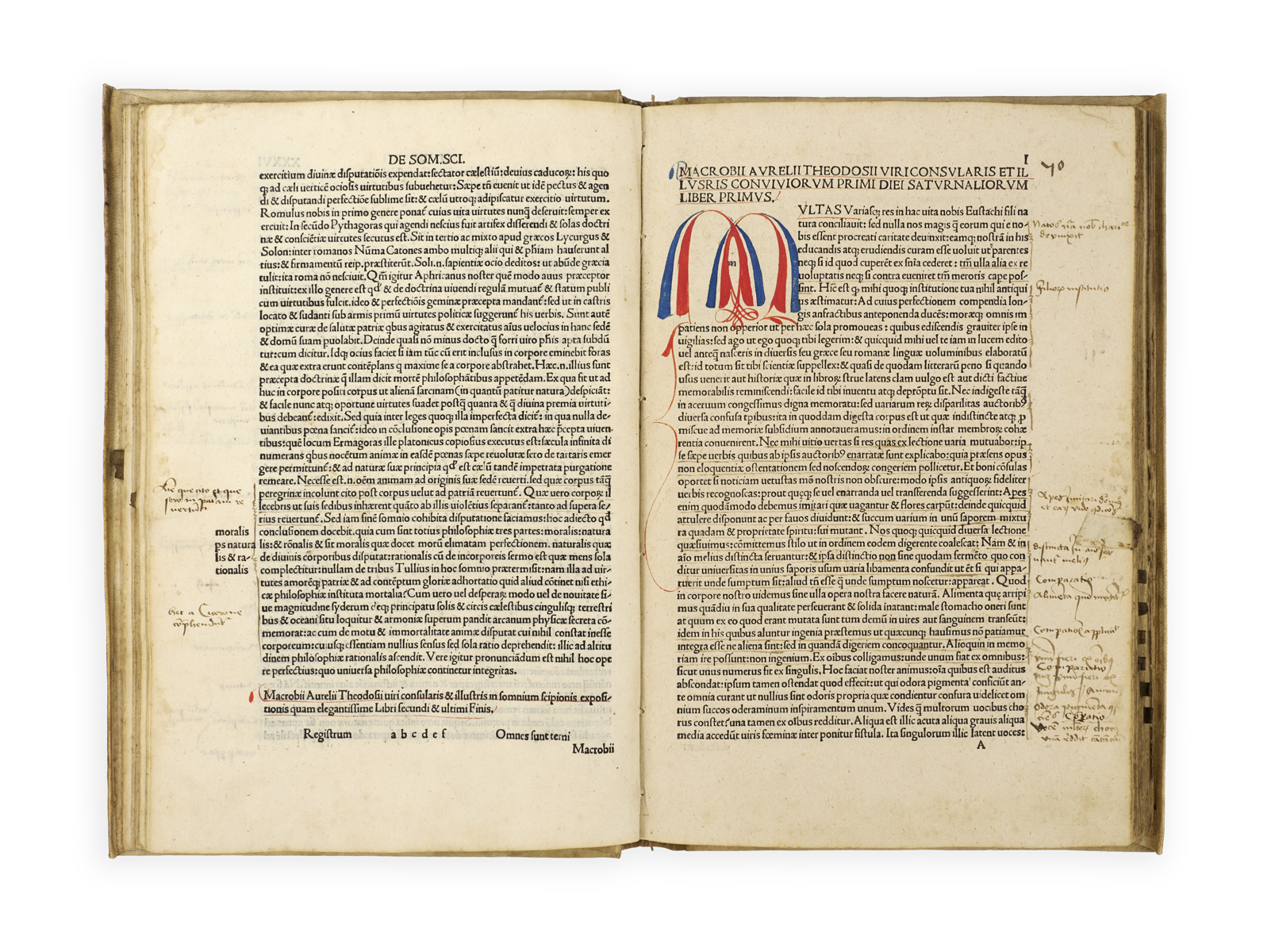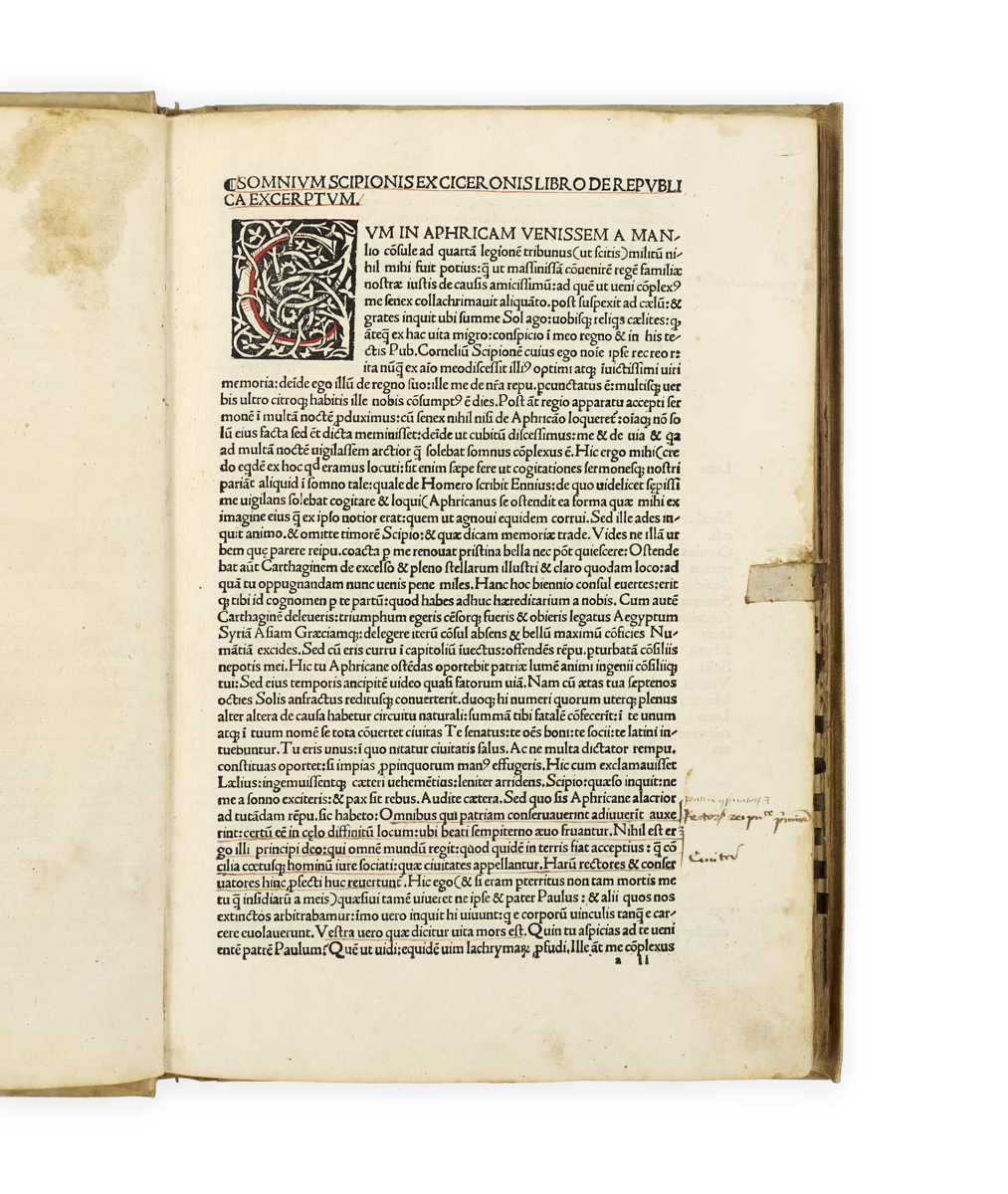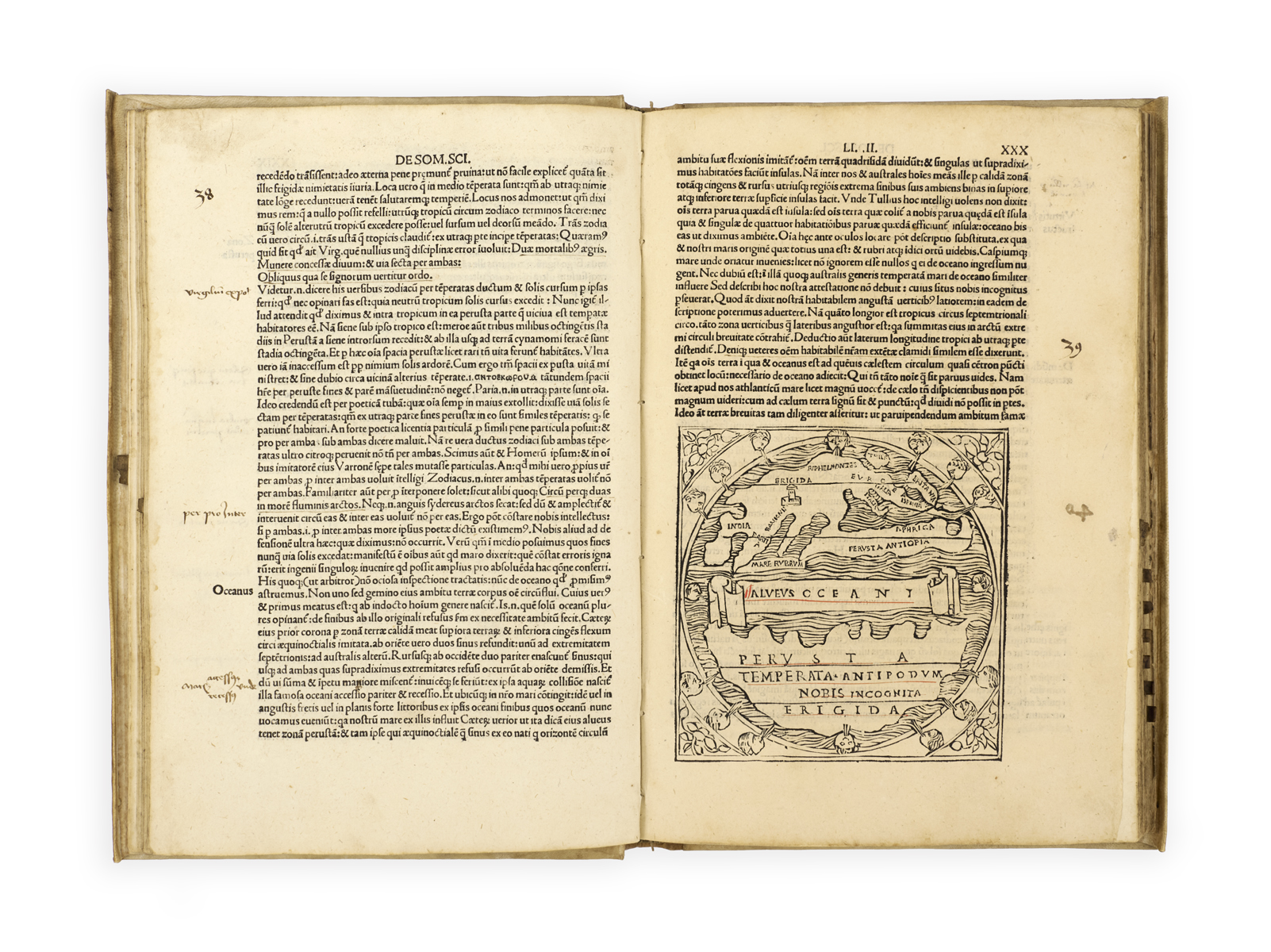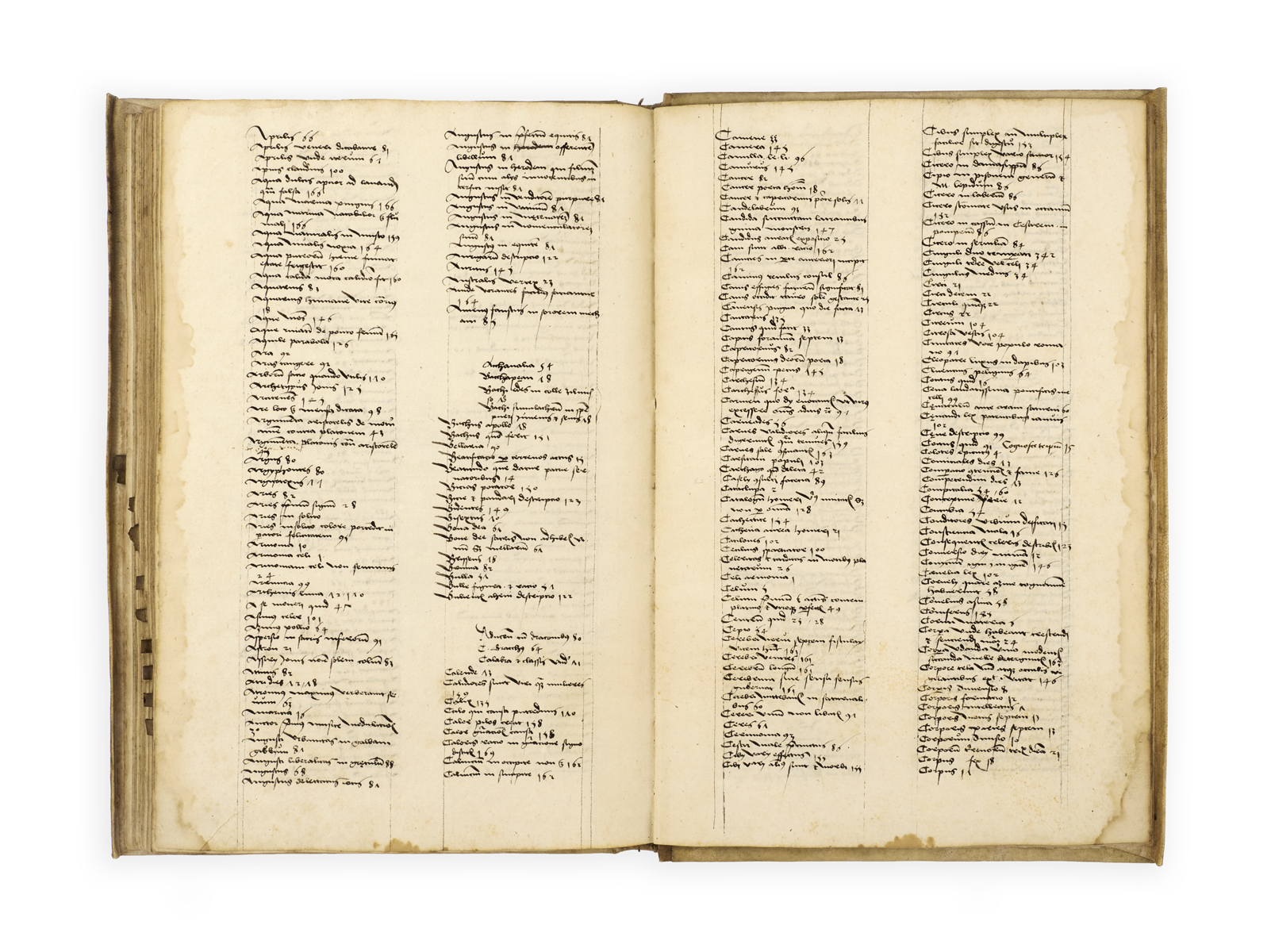



MACROBIUS WITH MARGINALIA
MACROBIUS, Ambrosius Theodosius.
Somnium Scipionis ex Ciceronis libro De republica excerptum; Macrobii … primi diei Saturnaliorum liber primus.
Venice, Filippo Pinzi, 29 October 1500.
Two parts in one vol., folio, ff. [II]–XXXVI (wanting the first leaf, blank except for ‘Macrobius’); LXXXVI; roman letter, woodcut initial, half-page woodcut world map (e6r), and 7 woodcut diagrams to first part, capital spaces with guide letters with initials supplied in red and blue in a contemporary hand, some passages in Greek; some browning, occasional light marks and light marginal damp-staining; overall very good in eighteenth-century vellum over boards, yapp fore-edges, manuscript title and imprint on spine, remains of nine earlier fore-edge tabs to text block; marginal annotations in a neat early sixteenth-century hand to c. 164 pp. and a 15-pp. manuscript index, in double columns, in the same hand, bound in at end.

Added to your basket:
Somnium Scipionis ex Ciceronis libro De republica excerptum; Macrobii … primi diei Saturnaliorum liber primus.
Sixth and last incunable edition of Macrobius, illustrated with a world map, with extensive early marginalia.
The volume comprises Macrobius’ two principal works, his important Neoplatonist commentary on Cicero’s Somnium Scipionis (the otherwise lost sixth book of the De Republica), and his Saturnalia, a significant contribution to Virgilian scholarship.
Influenced by Porphyry and Plotinus, Macrobius’ commentary on the Somnium ‘examines the enigma of the soul and its destiny in the light of Neoplatonism and of the astronomy and mathematics of the day (incidentally covering many topics including music and geography), and tends to reinforce the doctrine of the “Dream”, of the immortality and divine quality of the soul, from a pagan standpoint. Macrobius’ commentary was attentively studied in the West during the Middle Ages, thereby transmitting much ancient science and Neoplatonic thought’ (Oxford Companion to Classical Literature). Framed as conversations at a banquet during the Saturnalia festival, the second work contains much discussion of Virgil, including his power of expression, and his debt to Homer, Ennius and others; ‘he is gradually built up to be the unique scholar and poet in a way which foreshadows the medieval view of him as a wonder-working magician’ (ibid.). For the woodcut world map, see Shirley’s The mapping of the world, no. 13. The present rendering differs slightly from the earlier versions found in the Brescia editions of 1483 and 1485 and the Venice edition of 1492.
An early reader of this copy has picked out numerous passages of interest with neat marginal notes, and has added a thorough alphabetical subject index at the end, so neatly executed that it must have been copied from another manuscript or printed source.
BMC V 499; Goff M13; Bod-Inc M-005; ISTC im00013000; Essling 1232; Sander 4075.